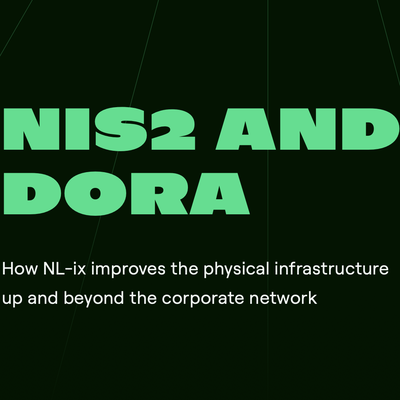
Datacenter Strategy
Is your datacenter strategy resilient enough to meet DORA requirements?
Many organizations still operate under the traditional assumption that a backup location should be nearby—like Rotterdam for Amsterdam. But is that approach still the right one? Have you critically assessed the impact of the Digital Operational Resilience Act (DORA) on your IT infrastructure?
DORA: A gamechanger for datacenter strategy
DORA requires financial institutions and other critical organizations to enhance their IT resilience. This means not only ensuring redundancy but also actively mitigating geographical risks. How robust is your backup strategy against natural disasters or other regional incidents? Have you thought about how to comply with these new regulations?
The geographical risks in the Netherlands
The Netherlands, being largely below sea level, relies on flood defenses such as dikes, dunes, and engineering structures to protect against water. The country is divided into dike rings, with each enclosed area shielded by a set of dikes. If a dike ring breaks, water from rivers, lakes, or the sea can lead to the flooding of the enclosed area.
Dike Ring 14, the largest of the 53 in total, spans the coast from IJmuiden to Hoek van Holland, passing through Rotterdam, Utrecht, and Amsterdam—the most densely populated part of the Netherlands.

In addition to being home to a significant portion of the population, the area within Dike Ring 14 is also the primary location for the majority of datacenters in the Netherlands. A staggering 74% of all Dutch datacenters are concentrated in the Amsterdam region. What happens to your business continuity if a dike ring fails?
Frankfurt: A strategic alternative?
More and more financial institutions are therefore now looking at Frankfurt as a safer backup location. And for good reasons! The city sits on higher ground, making it less susceptible to flooding while also being one of Europe’s key financial hubs.
Frankfurt's status as Germany's financial center brings with it a well-developed Internet infrastructure, making it an ideal hub specifically for financial organizations impacted by DORA legislation.
Data integrity and resilience
NL-ix has a strong presence in both Amsterdam and Frankfurt, providing ultra-low latency connectivity of just 5.5ms between these hubs. To enhance resilience, NL-ix offers redundancy through its A and B fabric, with the B-fabric being physically separated from the primary network to ensure greater resilience.
All data is routed exclusively within the secure NL-ix environment, with no third-party involvement, guaranteeing complete end-to-end control over data integrity and security. Additionally, NL-ix operates under Dutch legislation, fully aligned with EU regulations. This ensures strong legal protections and eliminates any influence from external jurisdictions.
How will you solve this challenge?
Are you ready to discuss the best way to make your datacenter strategy DORA-proof? Let’s talk! Contact NL-ix and discover how we can help you mitigate risks and future-proof your IT infrastructure.


